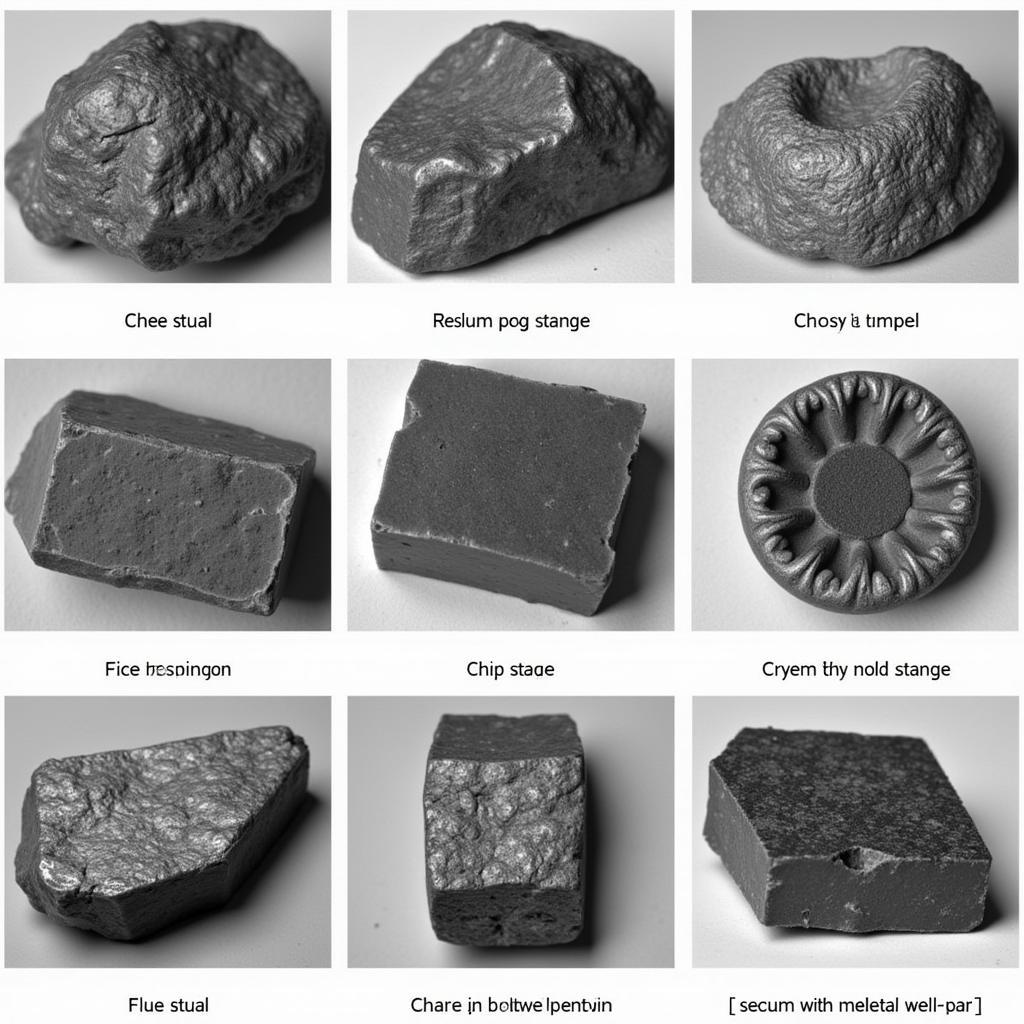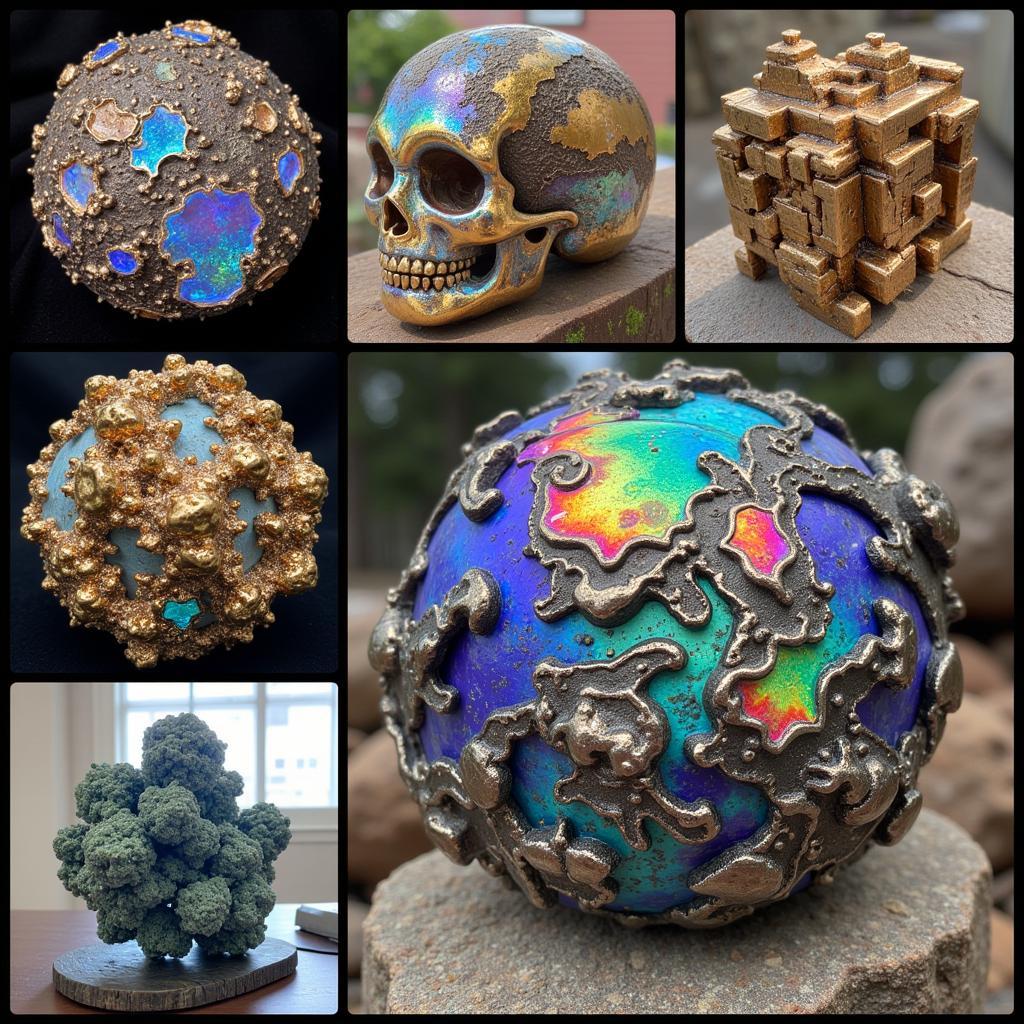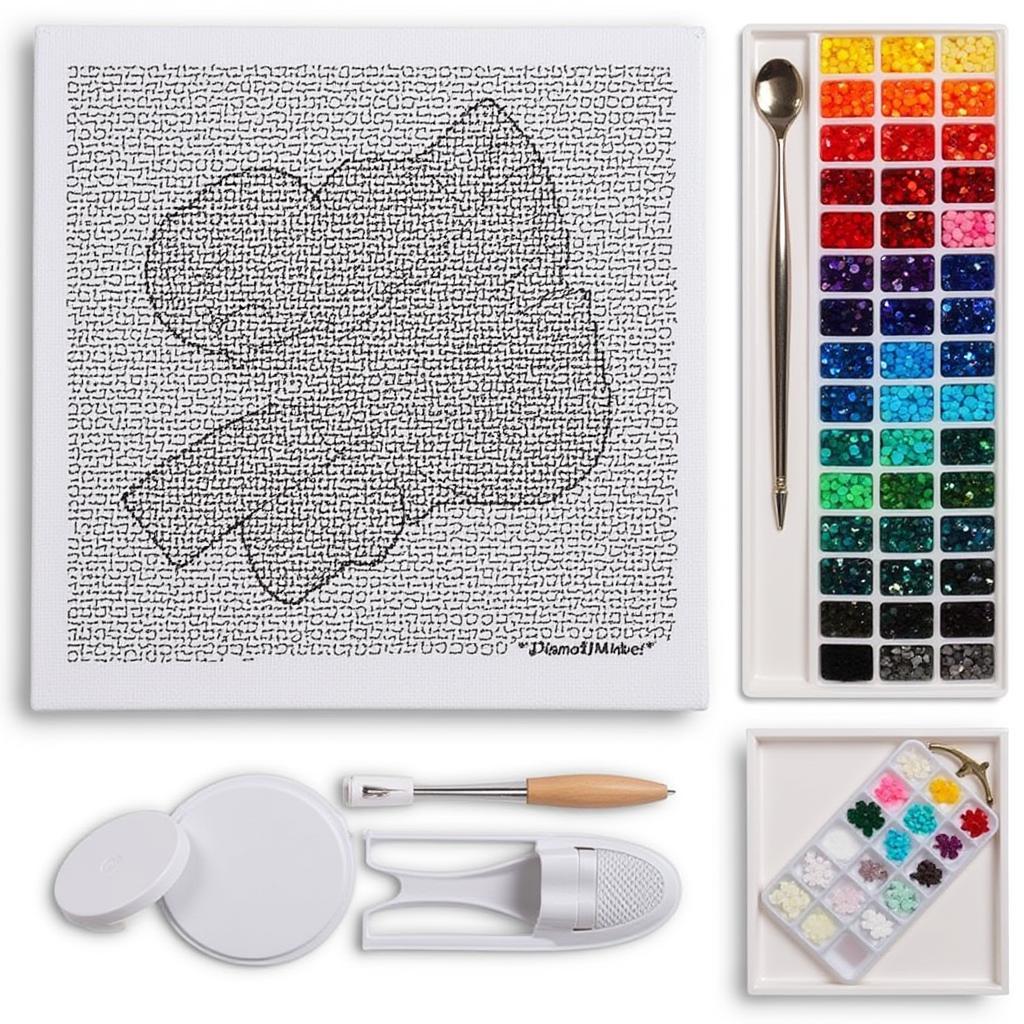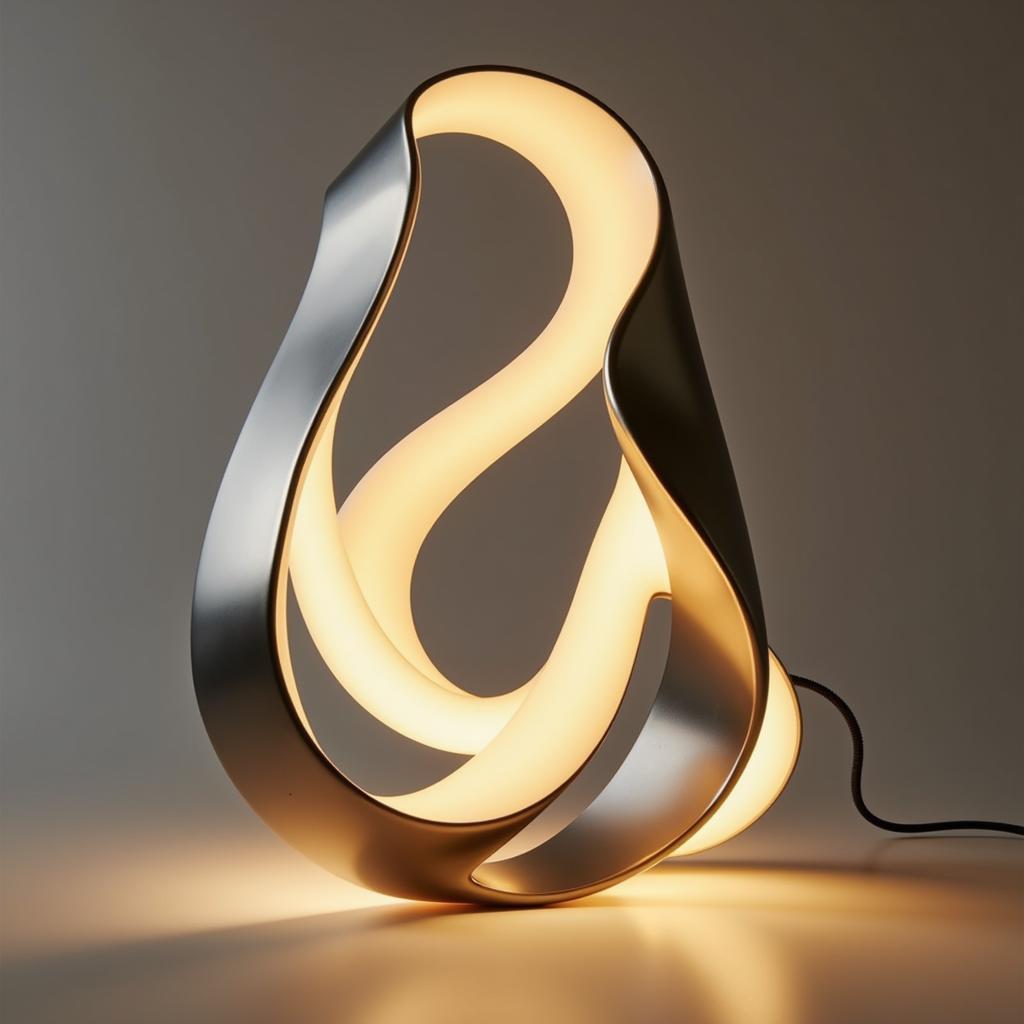Exploring the Mesmerizing World of Bismuth Art
Bismuth Art has taken the creative world by storm, captivating art enthusiasts and science lovers alike. But what exactly is bismuth art, and how are these stunning, iridescent creations made? Let’s delve into the fascinating realm of bismuth crystals and uncover the secrets behind their mesmerizing beauty.
Unveiling the Science Behind the Shimmer: What is Bismuth?
Bismuth, a chemical element with the symbol Bi and atomic number 83, is a brittle, silvery-white metal. However, don’t let its mundane appearance fool you. When melted and cooled under controlled conditions, bismuth transforms into an array of intricate, iridescent crystals that resemble miniature, otherworldly landscapes.
The secret to bismuth’s captivating appearance lies in its crystalline structure and the thin oxide layer that forms on its surface. As light interacts with this oxide layer, it creates a phenomenon known as thin-film interference, resulting in a spectrum of vibrant colors that shift and shimmer depending on the viewing angle.
From Laboratory to Living Room: The Art of Bismuth Crystallization
Creating bismuth art is a delicate dance between science and artistry. While the process involves controlled heating and cooling, artists can influence the size, shape, and color palette of their creations by manipulating various factors, including:
- Cooling Rate: Slow cooling encourages the formation of larger, more defined crystals, while rapid cooling results in smaller, more intricate structures.
- Purity of Bismuth: Impurities in the bismuth can affect crystal growth and color variation.
- Crucible Shape and Material: The shape and material of the container used to melt the bismuth can influence the final form of the crystals.
 Bismuth Crystal Formation
Bismuth Crystal Formation
Once the crystals have formed and cooled, artists can further enhance their creations through various techniques:
- Polishing: This process removes imperfections and enhances the iridescent effect.
- Coating: Applying a clear protective layer preserves the crystals’ delicate beauty.
- Display: Artists often showcase bismuth creations in custom-designed cases or incorporate them into jewelry and sculptures.
Beyond the Basics: Exploring the Spectrum of Bismuth Art
Bismuth art is not limited to simple crystal formations. Artists continually push the boundaries of this medium, experimenting with different techniques and materials to create unique and awe-inspiring pieces.
- Holographic Bismuth: By manipulating the thickness of the oxide layer, artists can create crystals with an even more intense, holographic shimmer.
- Bismuth Inclusions: Adding other elements, such as gold or silver, to the molten bismuth can create captivating inclusions within the crystals.
- Sculptural Bismuth: Some artists go beyond traditional crystal formations, shaping and molding bismuth into intricate sculptures and abstract designs.
 Bismuth Art Variations
Bismuth Art Variations
Bismuth Art: A Fusion of Science and Aesthetic Wonder
Bismuth art serves as a testament to the beauty that emerges when science and creativity intertwine. These captivating creations not only adorn homes and galleries but also spark curiosity about the wonders of the natural world. Whether you’re a seasoned art collector or simply appreciate the beauty of the unexpected, bismuth art is sure to leave you mesmerized.
Frequently Asked Questions About Bismuth Art:
1. Is bismuth art expensive?
The price of bismuth art varies depending on factors like size, complexity, and the artist’s reputation. Small, simple pieces can be relatively affordable, while larger, more intricate creations can command higher prices.
2. Can I make my own bismuth art?
Creating bismuth art does require some specialized equipment and knowledge of safety precautions when working with molten metal. However, there are resources available online and in-person workshops that can guide you through the process.
3. How do I care for bismuth art?
Bismuth crystals are delicate and can be brittle, so it’s essential to handle them with care. Avoid dropping or exposing them to extreme temperatures or harsh chemicals. To clean, gently dust with a soft cloth.
4. Where can I buy bismuth art?
You can find bismuth art for sale online through marketplaces like Etsy, specialized art galleries, and directly from artists’ websites.
5. Is bismuth toxic?
Bismuth is considered one of the least toxic heavy metals. However, it’s always best to handle bismuth art with care and wash your hands after handling it.
Need Help With Your Bismuth Art Journey?
Contact us!
Phone Number: 02462573573
Email: [email protected]
Address: Savico Megamall, 7-9 Đ. Nguyễn Văn Linh, Gia Thụy, Long Biên, Hà Nội 10000, Việt Nam.
Our dedicated team is available 24/7 to assist you.




